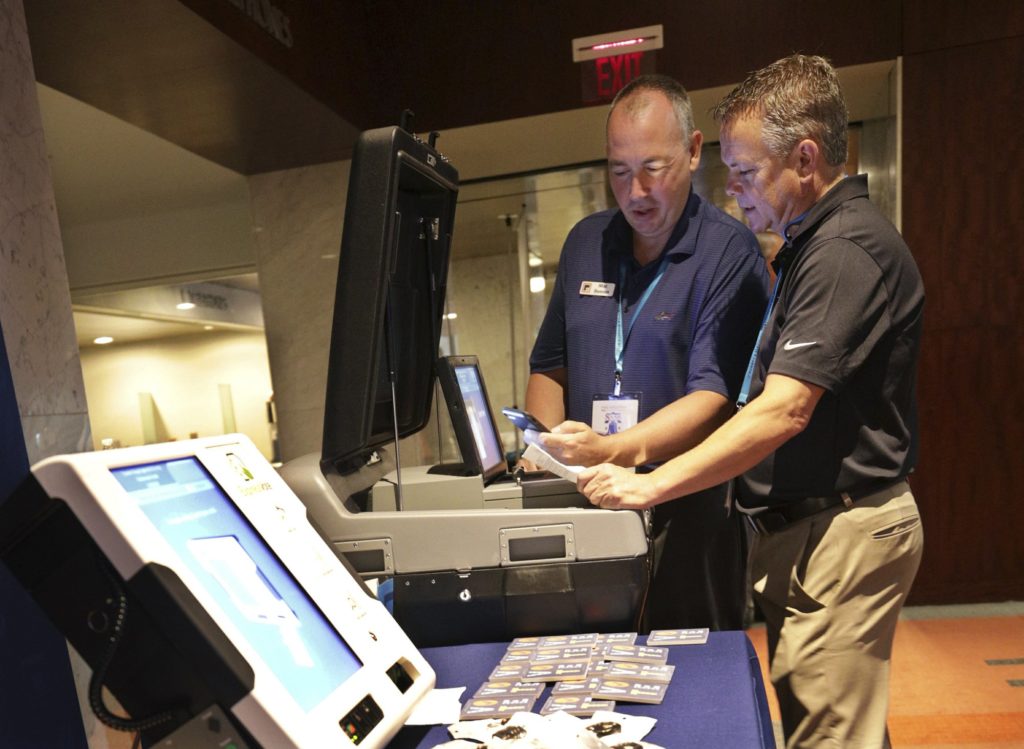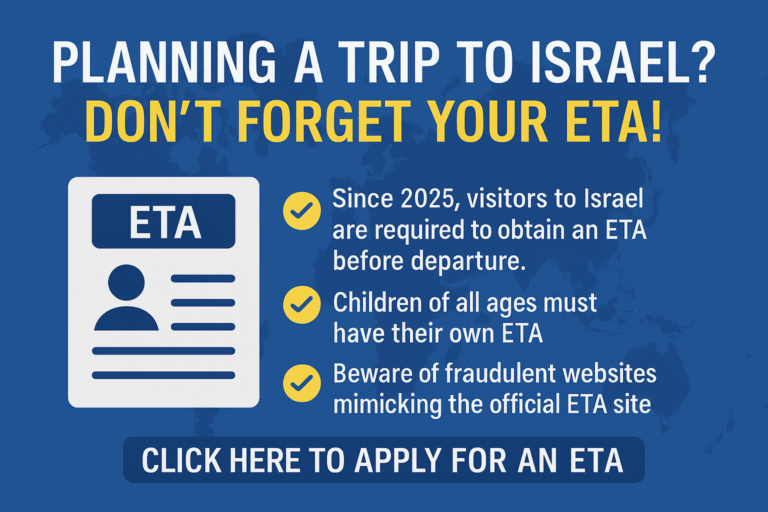It was the kind of security lapse that gives election officials nightmares. In 2017, a private contractor left data on Chicago’s 1.8 million registered voters — including addresses, birth dates and partial Social Security numbers — publicly exposed for months on an Amazon cloud server.
Later, at a tense hearing , Chicago’s Board of Elections dressed down the top three executives of Election Systems & Software, the nation’s dominant supplier of election equipment and services.
The three shifted uneasily on folding chairs as board members grilled them about what went wrong. ES&S CEO Tom Burt apologized and repeatedly stressed that there was no evidence hackers downloaded the data.
The Chicago lapse provided a rare moment of public accountability for the closely held businesses that have come to serve as front-line guardians of U.S. election security.
A trio of companies — ES&S of Omaha, Nebraska; Dominion Voting Systems of Denver and Hart InterCivic of Austin, Texas — sell and service more than 90 percent of the machinery on which votes are cast and results tabulated. Experts say they have long skimped on security in favor of convenience, making it more difficult to detect intrusions such as occurred in Russia’s 2016 election meddling.
The businesses also face no significant federal oversight and operate under a shroud of financial and operational secrecy despite their pivotal role underpinning American democracy.
In much of the nation, especially where tech expertise and budgets are thin, the companies effectively run elections either directly or through subcontractors.
“They cobble things together as well as they can,” University of Connecticut election-technology expert Alexander Schwartzman said of the industry leaders. Building truly secure systems would likely make them unprofitable, he said.
The costs of inadequate security can be high. Left unmentioned at the Chicago hearing: The exposed data cache included roughly a dozen encrypted passwords for ES&S employee accounts . In a worst-case scenario, a sophisticated attacker could have used them to infiltrate company systems, said Chris Vickery of the security firm Upgard, which discovered the data lapse.
“This is the type of stuff that leads to a complete compromise,” he said. ES&S said the passwords were only used to access the company’s Amazon cloud account and that “there was no unauthorized access to any data or systems at any time.”
All three of the top vendors declined to discuss their finances and insist that security concerns are overblown. ES&S, for instance, said in an email that “any assertions about resistance to input on security are simply untrue” and argued that for decades the company has “been successful in protecting the voting process.”
STONEWALLING ON SECURITY
Many voting systems in use today across the more than 10,000 U.S. election jurisdictions are prone to security problems. Academic computer scientists began hacking them with ease more than a decade ago, and not much has changed.
Hackers could theoretically wreak havoc at multiple stages of the election process. They could alter or erase lists of registered voters to sow confusion, secretly introduce software to flip votes, scramble tabulation systems or knock results-reporting sites offline.
There’s no evidence any of this has happened, at least not yet.
The vendors say there’s no indication hackers have penetrated any of their systems. But authorities acknowledge that some election mischief or malware booby traps may have gone unnoticed.
On July 13, U.S. special counsel Robert Mueller indicted 12 Russian military intelligence operatives for, among other things, infiltrating state and local election systems. Senior U.S. intelligence officials say the Kremlin is well-positioned to rattle confidence in the integrity of elections during this year’s midterms, should it choose to.
Election vendors have long resisted open-ended vulnerability testing by independent, ethical hackers — a process that aims to identify weaknesses an adversary could exploit. Such testing is now standard for the Pentagon and major banks.
While the top vendors claim to have stepped up their cybersecurity game, experts are skeptical.
“The industry continues to stonewall the problem,” said Bruce McConnell, a Department of Homeland cybersecurity czar during the Obama administration. Election-vendor executives routinely issue assurances, he said, but don’t encourage outsiders to inspect their code or offer “bug bounties” to researchers to seek out flaws in their software.
Sen. Ron Wyden, an Oregon Democrat, has long criticized what he calls the industry’s “severe underinvestment in cybersecurity.” At a July hearing, he accused the companies of “ducking, bobbing and weaving” on a series of basic security questions he’d asked them.
ES&S told The Associated Press that it allows independent, open-ended testing of its corporate systems as well as its products. But the company would not name the testers and declined to provide documentation of the testing or its results.
Dominion’s vice president of government affairs, Kay Stimson, said her company has also had independent third parties probe its systems but would not name them or share details. Hart InterCivic, the No. 3 vendor, said it has done the same using the Canadian cybersecurity firm Bulletproof, but would not discuss the results.
ES&S hired its first chief information security officer in April. None of the big three vendors would say how many cybersecurity experts they employ. Stimson said that “employee confidentiality and security protections outweigh any potential disclosure.”
SLOPPY SOFTWARE AND VULNERABILITY
Experts say they might take the industry’s security assurances more seriously if not for the abundant evidence of sloppy software development, a major source of vulnerabilities.
During this year’s primary elections, ES&S technology failed on several fronts.
In Los Angeles County, more than 118,000 names were left off printed voter rolls. A subsequent outside audit blamed sloppy system integration by an ES&S subsidiary during a database merge.
No such audit was done in Kansas’ most populous county after a different sort of error in newly installed ES&S systems delayed the vote count by 13 hours as data uploading from thumb drives crawled.
University of Iowa computer scientist Douglas Jones said both incidents reveal mediocre programming and insufficient pre-election testing. And voting equipment vendors have never seemed security conscious “in any phase of their design,” he said.
For instance, industry leader ES&S sells vote-tabulation systems equipped with cellular modems, a feature that experts say sophisticated hackers could exploit to tamper with vote counts. A few states ban such wireless connections; in Alabama, the state had to force ES&S to remove them from machines in January.
“It seemed like there was a lot more emphasis about how cool the machines could be than there was actual evidence that they were secure,” said John Bennett, the Alabama secretary of state’s deputy chief of staff.
California conducts some of the most rigorous scrutiny of voting systems in the U.S. and has repeatedly found chronic problems with the most popular voting systems. Last year, a state security contractor found multiple vulnerabilities in ES&S’s Electionware system that could, for instance, allow an intruder to erase all recorded votes at the close of voting.
In 2014, the same contractor, Jacob Stauffer of the security firm Coherent Cyber, found “multiple critical vulnerabilities” in Dominion’s Democracy Suite that could allow skilled hackers to compromise an election’s outcome.
“These systems are Frankenstein’s monster, essentially,” Stauffer said.
The federal Department of Homeland Security began offering confidential vulnerability testing to vendors over the summer. But only one vendor has submitted to such testing, said an agency official who spoke on condition of anonymity because the official was not authorized to discuss the matter publicly.
STALLED INNOVATION
More competition might help, but industry barriers to smaller vendors are “absolutely enormous,” said Larry Moore, president of upstart Clear Ballot. Its auditable voting system took two and a half years to win federal certification at a cost of $1 million.
Startups are hard-pressed to disrupt an industry whose main players rely heavily on proprietary technologies. ES&S and other vendors have jealously guarded them in court — and also unleash lawyers against election officials who purchase competitors’ products.
In October, ES&S sued Cook County, Illinois, seeking to void its $30 million, 10-year contract with a competitor. It also recently threatened Louisiana and Douglas County, Kansas, with lawsuits for choosing other suppliers.
Cook County Elections Director Noah Praetz said suing in defense of market share only chills competition in an industry with “horribly low” margins, especially considering limited government funding for election equipment.
“The market isn’t functioning real well in terms of bringing innovation,” he said.
LIMITED OVERSIGHT
Elections are run by the states, whose oversight of suppliers varies. California, New York and Colorado are among states that keep a close eye on the vendors, but many others have cozier relationships with them.
And the vendors can be recalcitrant. In 2017, for instance, Hart InterCivic refused to provide Virginia with a paperless e-Slate touchscreen voting machine for testing, said Edgardo Cortes, then the state election commissioner.
In this year’s midterms — as in the 2016 election — roughly 1 in 5 voters will use such electronic machines. Their tallies cannot be verified because they produce no paper record.
Cortes decided to decertify all such systems. If anyone tried to break in and alter votes, he concluded, “there was really no way for us to tell if that had happened.” Hart InterCivic’s vice president of operations, Peter Lichtenheld, did not dispute Cortes’ account in July Senate testimony, but said its Virginia customers were already moving to newer machines.
At the federal level, no authority accredits election vendors or vets them or their subcontractors. No federal law requires them to report security breaches or to perform background checks on employees or subcontractors.
Election vendors don’t even have to be U.S. companies. Dominion was Canadian-owned until July, when a New York private equity firm bought a controlling interest.
Federal oversight is limited to the little-known Election Assistance Commission, a 30-employee agency that certifies voting equipment but whose recommendations are strictly voluntary. It has no oversight power and cannot sanction manufacturers for any shortcomings.
“We can’t regulate,” EAC chairman Thomas Hicks said during a July 11 congressional hearing when the question came up. Neither can DHS, even though it designated the nation’s election systems “critical infrastructure” in early 2017.
(AP)











